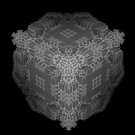I’ve developed a very basic physics-“engine” for some blocks in my game (required a less accurate one compared to bullet). However, it calculates positions on CPU. Is there a way to instead use the GPU to both increase performance AND number of objects used (boxes)?
I’m guessing that it’s somehow possible using shaders, but I’m not sure. If so, are there any good tutorials/examples for using custom shaders with Urho3d?
Thanks!



